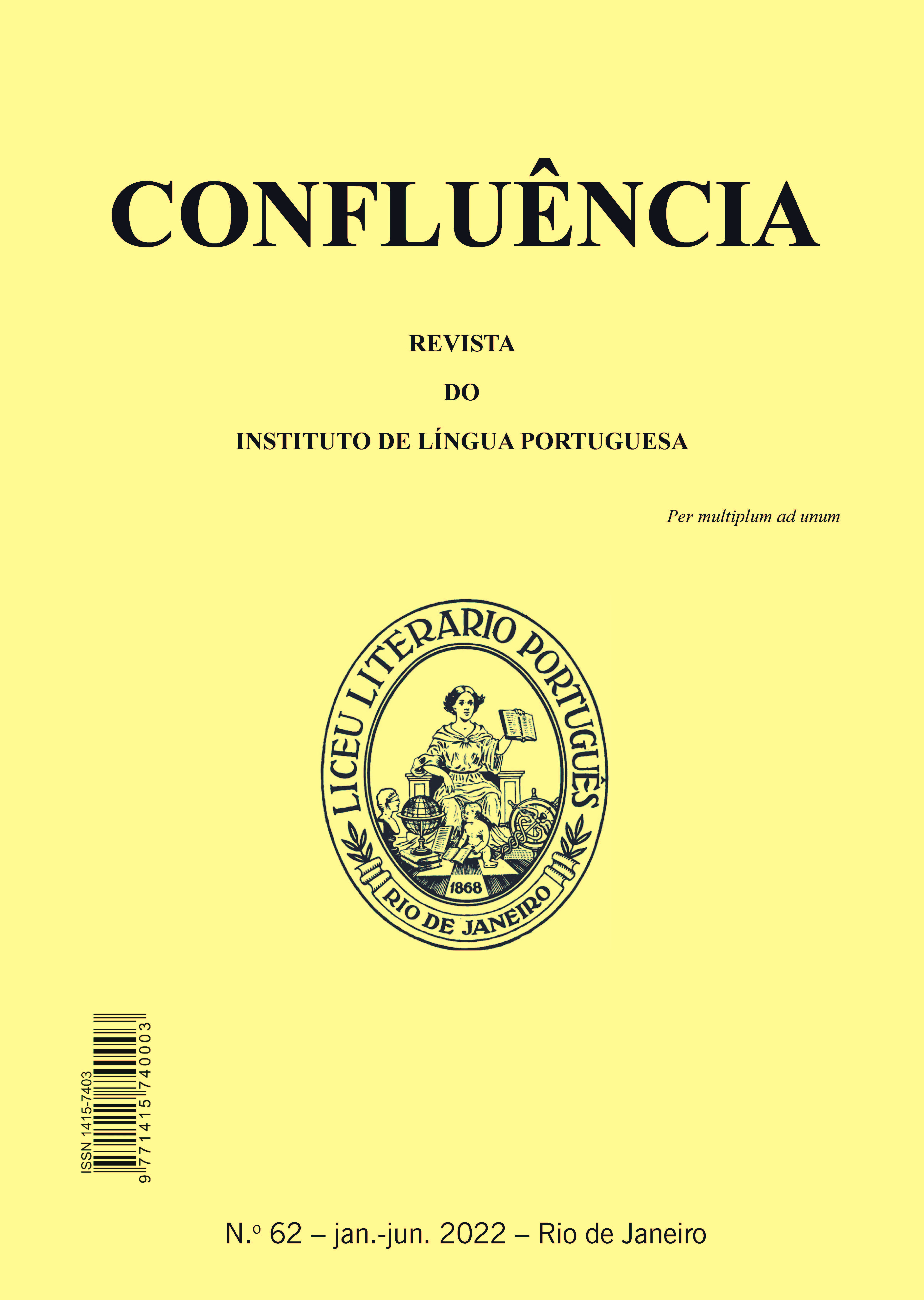Acoustic signal processing from a dichotic experiment
DOI:
https://doi.org/10.18364/rc.2022n62.522Keywords:
Dichotic experiment, processing, speech acoustic signal, early literacy, attentional mechanismsAbstract
Speech acoustic signal processing in minimal dichotic listening simultaneous pairs is discussed, differing only in the first occlusive segment, in CV bisyllabic paroxytones, to verify the early literacy effect. Methodology: Twenty-nine children with a mean age of 7.3 or 7.4 years old, belonging to two medium-high (NSEM) and low (NSEB) socioeconomic levels participated: at the Elementary School 1st year end, early literate NSEM ten and NSEB eight children and at the 1st year beginning, only illiterate NSEB eleven. Results: although there were no significant differences in the number of correct answers, intrusions and blendings, between the early literate and illiterate, the answers differ in terms of the two populations strategies. Early literacy influences greater consistency in strategies based on duration, while those of the illiterate are random, or diffuse. The distinctive phonetic features that compose the phoneme bundle processing is confirmed.
Downloads
References
BERRETZ, G.; PACKHEISER, J.; WOLF, O. T.; OCKLENBURG, S. Dichotic listening performance and interhemispheric integration after stress exposure, Scientific Reports. Scandinavian Journal of Psychology, Oslo, v. 10, n.1, 2020. DOI: 10.1038/ s41598-020-77708-5.
BROADBENT, D. E. The role of auditory localization in attention and memory span. Journal of Experimental Psychology, Washington, DC, p. 191-196, 1954.
BROADBENT, D. E. Perception and communication. Long Island, NY: Pergamon, 1958, 338 p.
BRODMANN, K.; GAREY, L. J. Brodmann’s Localisation in the Cerebral Cortex - The Principles of Comparative Localization in the Cerebral Cortex Based on Cytoarchitectonics. Translated from German with editorial notes and an introduction by Garey, L. J. 3. ed. New York: Springer Science + Business Media, Inc., 2006 [1909].
DEHAENE, S. Os neurônios da leitura – Como a ciência explica a nossa capacidade de ler. Consultoria, trad. e supervisão, SCLIAR-CABRAL, L. Porto Alegre: Penso, 2012, 374 p.
D’AQUILI, E. G. The biopsychological determinants of culture. An Addison-Wesley Module in Anthropology. Reading, Mass.: Addison-Wesley, 13, 1973.
EIMAS, P. D.; SIQUELAND, E. R.; JUSCZYK, P.W; VIGORITO, J. Speech perception in infants. Science, Washington, DC, v. 171, n. 3968, p. 303-306, Jan. 22,
FODOR, J. A. The modularity of mind. Cambridge, MA: MIT Press, 1983, 153 p.
FRIEDERICI, A. D. Towards a neural basis of auditory sentence processing. Trends in Cognitive Sciences, Amsterdam, v. 6, n. 2, p. 78-84, fev. 2002.
FRIEDERICI, A. D. The current Model. Physiological Reviews, v. 91, n. 4, p. 1357-1392, 2011. Disponível em: <http://www.cbs.mpg.de/mitarbeiter/friederici/current-model>. Acesso em 04 ag., 2016.
GARMAN, M. Psycholinguistics. Cambridge, UK: Cambridge University Press, 1990, p. 512.
HUGDAHL, K. Dichotic listening and attention: the legacy of Phil Bryden. Laterality, Londres, v. 21, n. 4-6, p. 433-454, 2016 Jul-Nov.
JAKOBSON, R. Fonema e fonologia. Trad. de J. Mattoso Camara Jr. Rio de Janeiro: Acadêmica, 1967, 187 p.
KIMURA, D. Some effects of temporal-lobe damage on auditory perception. Canadian. J. Psychol., Waterloo, ON, Canada, v.15, p. 156-65, 1961.
LIBERMAN, A. M.; COOPER, F. S.; SHANKWEILER, D. P.; STUDDERT-KENNEDY, M. Perception of the speech code. Psycholoqy Review, Washington, DC, v. 74, n. 6, p. 431-461, nov.1967.
LISKER, L.; ABRAMSON, A. S. The voicing dimension: some experiments in comparative phonetics. Proceedings of the Sixth International Congress of Phonetic Sciences. Praga: Academia Publishing House of the Czechoslovak Academy of Sciences, 1970, p. 562-567.
MORAIS, J.; CASTRO, S. L.; SCLIAR-CABRAL, L.; KOLINSKY, R.; CONTENT, A.; The effects of literacy on the recognition of dichotic words. The Quarterly Journal of Experimental Psychology, Londres, v. 39, n. 3, p. 451-65, Ag. 1987.
MORAIS, J.; KOLINSKY, R. Literacy effects on language and cognition. In: BÄCKMAN, L.; HOFSTEN, C. von (Orgs.). Psychology at the turn of the millennium. Cognitive, biological, and health perspectives. Londres: Psychology Press/Taylor & Francis (Reino Unido), 2002, v. 1, p. 507-530. Disponível em: <https://www.research gate.net/publication/285765555_Literacy_effects_on_ language _and_cognition>. Acesso em 29 mar. 2021.
PAPAMANOLIOUDAKIS, G. Dichotic Listening Experiment. UK Essays, Nottinghamshire, UK, nov. 2018. Disponível em . Acesso em 08 jun., 2021.
PINHEIRO, M. Fundamentos de neuropsicologia - O desenvolvimento cerebral da criança. Vita et Sanitas, Trindade/Go, v. 1, n.1, p. 34-48, 2007
SARUBBI, I. M. Experimentos dicóticos em crianças alfabetizadas e pré-alfabetizadas. 1988. 82 f. Dissertação de Mestrado. Programa de Pós-Graduação em Linguística. Universidade Federal de Santa Catarina, 1988.
SCLIAR-CABRAL, L. Declínio da percepção categorial fonética inata no primeiro ano de vida. Letras de Hoje. Porto Alegre, v. 39, n. 3, p. 79-87, 2004.
SCLIAR-CABRAL, L. Sonogramas de enunciados - português brasileiro. In: ALMEIDA CASTRO, L. H.; CARVALHO MORETO, F. V. de; PEREIRA, T. T. (Orgs.). Problemas e Oportunidades da Saúde Brasileira. Ponta Grossa: Atena Editora, 2020, v. 7, p. 118-127.
SHANNON, C. E. A mathematical theory of communication. Bell System Technological Journal, New Jersey, n. 27, p. 379- 423, 1948.
WESTERHAUSEN, R.; SAMUELSEN, F. An optimal dichotic-listening paradigm for the assessment of hemispheric dominance for speech processing, Plos One, São Francisco, v. 15, n. 6, (e0234665), (2020).
Downloads
Published
Issue
Section
License
Copyright (c) 2022 Leonor Scliar Cabral

This work is licensed under a Creative Commons Attribution-NonCommercial 4.0 International License.
The author who publishes in this journal agrees to the following terms: The author maintains the copyright and grants the journal the right of first publication, with the work simultaneously licensed under the Creative Commons Attribution License that allows the sharing of the work with acknowledgment of the authorship and initial publication in this journal. The author is authorized to take additional contracts separately, for non-exclusive distribution of the version of the work published in this journal (eg publish in institutional repository or as a book chapter), with acknowledgment of authorship and initial publication in this journal. The author is allowed and encouraged to publish and distribute his work online (eg in institutional repositories or on their personal page) at any point before or during the editorial process, as this can generate productive changes, as well as increase the impact and citation of the published work.








